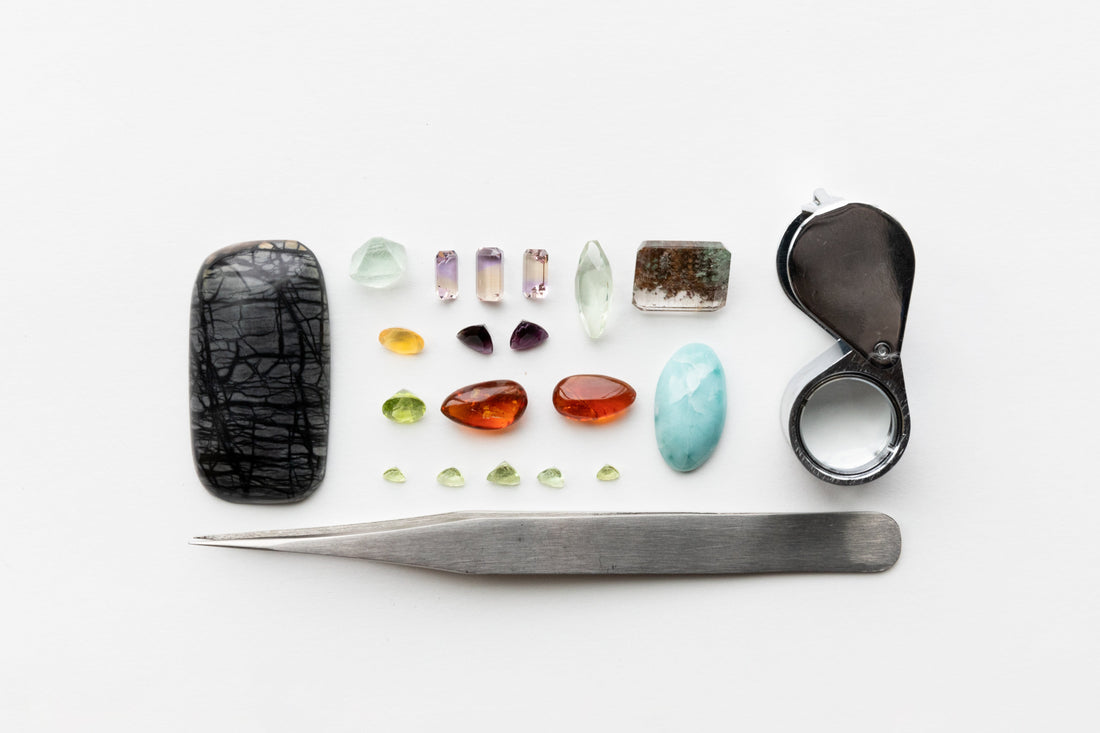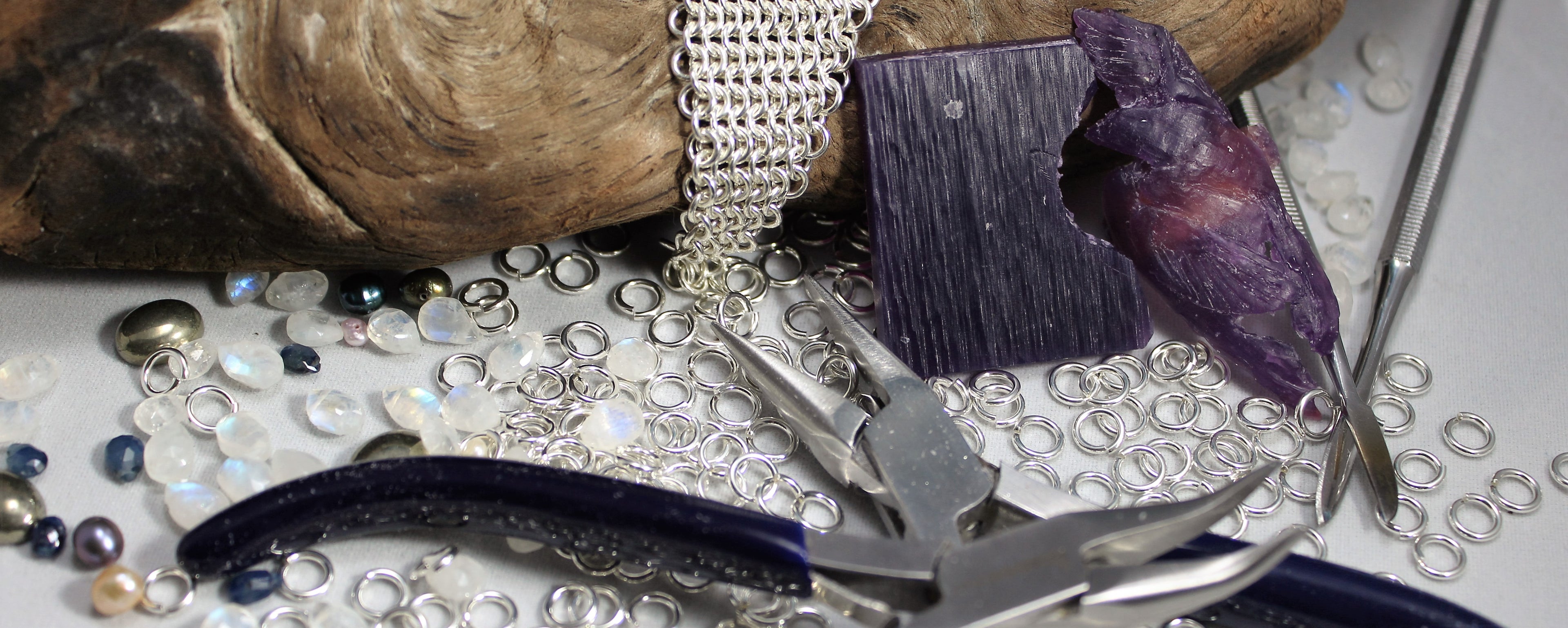
The Mohs Scale and Gemstone Durability
What is the Mohs scale? The short answer is that it is a scale, ranging from 1 to 10, that characterizes how hard a mineral is, specifically how hard it is to scratch. But we’re getting ahead of ourselves! Let’s start from the beginning.
Gemstones: wonderful minerals and organic marvels that come in all shapes, sizes, colors, and patterns! There is something for everybody’s taste, but sadly not every gemstone is created equal when it comes to the rigors of everyday wear and tear. But how do you know which stone can withstand what? This is where the Mohs scale will come in but it’s not the only measurement you need to be aware of.
Gems are rated on their Durability. Durability has three separate categories and together these three let us know how a gem might react in different settings and pieces of jewelry. The three categories are Hardness, Toughness, and Stability.
Hardness is what the Mohs scale measures, specifically how hard a stone is to scratch, as I said above. You’ll see this scale used a lot in the jewelry industry, but often with important information missing. The Mohs scale is not linear and there are some quite large jumps between the numbers, which is because the property measured is qualitative and generally not measured with a numerical result.

A popular representation of the Mohs Scale
In the case of the Mohs scale, created in 1822 by a German professor called Friedrich Mohs, it measures which gem can be scratched by other gems. Diamond can scratch itself and any other item in the world and so it was awarded the designation of 10. Sapphire/Ruby, aka corundum, can be scratched by diamond and several other things, but not many other gems so it was given the designation of 9….and so on and so forth.
However, what most people neglect to mention is that the difference between 9 and 10 is quite big, and the difference between 10 and 1(eg: a mineral called Talc) is downright massive! Diamond is 140 times harder than sapphire! One hundred and forty times! And 124,000 times harder than Talc(1)! That is, quite frankly, a little mind boggling!

A more accurate Mohs Scale - GIA
*I tried finding the difference between Moissanite and Diamond but it’s very hard to find the information, as the tests needed to figure it out will destroy the gems and so people don’t want to waste stones. If I was to try to extrapolate, with Moissanite rating a 9.25/9.5 on the Mohs scale, that would still make a diamond 105 to 70 times harder than a moissanite. But that’s just a rough guess on my part.
And here's how some everyday objects fit into the Mohs scale, courtesy of compoundchem.com

Toughness is a gems ability to withstand chipping, cracking, and general breakages. Toughness doesn’t have a nice, illustrated, scale like Hardness, unfortunately, and gems are instead rated as having Exceptional, Excellent, Good, Fair, or Poor Toughness. Some gemstones will appear under more than one rating as they have a range. Here's some examples:
| Exceptional | Jadeite, Nephrite |
| Excellent | Sapphire, Ruby, Alexandrite |
| Good | Amethyst, Peridot, Emerald, Aquamarine, Pearl |
| Fair | Coral, Opal, Emerald, Pearl, Peridot, Tourmaline, Turquoise, Tanzanite |
| Poor | Emerald, Tanzanite, Amber, Opal, Pearl, Turquoise, Moonstone, Topaz |
* You'll notice Diamond and Moissanite are not in the above table. That is because there is so much conflicting information out there that I could not find a concrete, unbiased, answer. The closest I found was that diamond could be anywhere from Good to Poor, and Moissanite could be Excellent to Poor. So potentially moissanite will survive drops and hits better, but diamond won't scuff.
How is Toughness different from Hardness? GIA gives the example of leather and porcelain; Leather is soft and easily scratched with a fingernail but it is tough and so stands up to a lot of wear and tear. Porcelain, however, is hard (a 7 on the Mohs scale) and difficult to scratch but can break easily if handled roughly or dropped.
Toughness depends on a gems internal structure, both how it’s crystalline structure is formed and any inclusions that might have been trapped within during that formation. If any gem falls, or is hit, just right it can break or even shatter. The mechanics of this are quite in depth and would take quite a while to explain so I’m not going to in this post. If enough people are interested, I’ll cover it in a future post.
Stability is the last category used to describe a gemstones durability. Stability refers to how a gem is effected by light, heat, and chemicals. Knowing how your jewelry will react to these different factors will allow you to properly take care of your pieces.
Diamonds are very stable, and most colored stones are stable in their natural forms but most colored stones have some undergone some sort of routine treatment. Treatments help improve color, and sometimes make the gem look like the clarity has improved. Sapphires are routinely heated to improve color, and the highly sought after purple/violet of Tanzanite is nearly impossible to find without heat treatment. In some stones, like sapphire, these treatments are completely permanent and shouldn’t fade when done correctly. Although further heat treatment to sapphires can alter their color more….but I’ll get to that in a moment.
Light is the first factor I’d like to talk about. Sunlight is a form of radiation. Sunburn is essentially a radiation burn. This radiation can cause some gemstones to fade. Amethyst for instance is one such gem, and should not be left in direct sunlight for prolonged periods of time.
Other stones that are often dyed as standard practice, like some lapis lazuli or jadeite or pearls, can also fade but this is more a case of the dye reacting to the light rather than the stone itself.
Overall it is best to store your jewelry somewhere out of direct light, preferably in a padded box or case.
Back to Heat! Heat can definitely cause stones to change color or fracture, but usually the heat needed is very high and unlikely to happen in the home….unless you leave your jewelry on a hot stove top!
Heat is most likely to effect a stone during the repair/modification process. A good jeweler will know, and take, all the necessary precautions to keep your jewelry safe, but sometimes accidents happen. They’ve happened to me, at least once, and it was the most awful feeling! Thankfully everything worked out in the end and the customer left happy.
Chemicals refers to pretty much anything your jewelry will come into contact with: moisturizer, sunscreen, household cleaners, swimming pool water, etc.
Generally it’s best to remove any jewelry before applying anything to your skin, or cleaning the house, or going for a swim.
And when you’re getting ready to go out a good rule of thumb is to leave putting your jewelry on until the very last. Even hairspray can damage certain gems, like pearls.
So there you have it! A rough overview of gemstones and their durability. Hardness and Toughness are going to be what you need to take into account when purchasing a stone and deciding what kind of jewelry it should be set into, and Stability is going to help you make sure that stone stays pristine for a very long time!
I hope that this post helps you with your future jewelry purchasing decisions.

